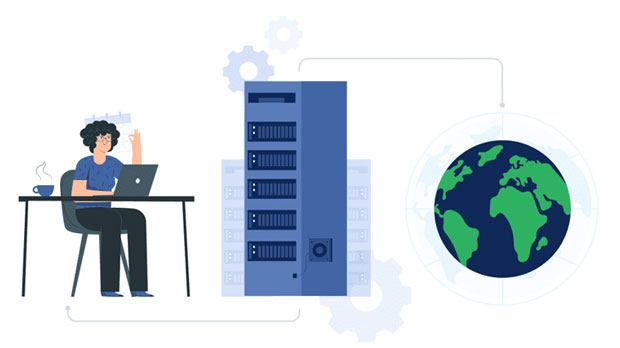In the fast-paced world of cross-border e-commerce, businesses are increasingly relying on advanced technologies to navigate the complexities of international markets. One such tool that has become essential for ensuring smooth, secure, and effective e-commerce operations is the static residential proxy. This article will explore the benefits, functions, and how to purchase a static residential proxy to enhance the safety and efficiency of cross-border e-commerce operations. We will break down the process, the importance of static residential proxies, and what to look for when buying one. What is a Static Residential Proxy?A static residential proxy is a type of proxy server that uses real IP addresses from internet service providers (ISPs) and links them to a specific location, providing users with a stable and reliable connection. Unlike regular datacenter proxies, which are often detected and blocked by websites, residential proxies mimic real users, making them harder to detect. static residential proxies are permanent, meaning they don’t change each time you connect, unlike dynamic residential proxies that rotate IPs.For cross-border e-commerce businesses, this stability and anonymity are crucial. With the increasing number of IP bans, geo-restrictions, and fraud detection systems implemented by e-commerce platforms, a static residential proxy helps avoid detection, ensuring a smooth and secure operation.Why Should E-Commerce Businesses Use Static Residential Proxies?Avoid Geo-Restrictions and Censorship E-commerce businesses often face geographical restrictions when selling internationally. Some platforms may limit access based on location, preventing business owners from accessing certain websites or making region-specific transactions. By using static residential proxies, businesses can mask their real IP address and appear as if they are operating from a specific region, bypassing geo-restrictions and censorship.Improve Product and Price Research Cross-border e-commerce often involves extensive market research. Static residential proxies allow businesses to access global websites without being blocked or receiving distorted pricing data due to location. They provide access to local pricing, product availability, and competitor strategies, offering insights that can drive more informed decision-making.Enhance Security and Anonymity With online transactions increasing, e-commerce businesses need to ensure their operations are secure. Static residential proxies provide an added layer of anonymity, protecting your business from malicious actors, hackers, and unwanted tracking. They also help shield your location, preventing your competitors from identifying and targeting your business based on IP data.Avoid IP Bans Many online marketplaces, such as Amazon and eBay, are equipped with advanced security systems that block suspicious IP addresses. This is a problem for businesses that engage in frequent data scraping, product testing, or managing multiple accounts. By using static residential proxies, companies can mask their IP address and reduce the likelihood of facing IP bans.Steps to Buy Static Residential Proxy for Cross-Border E-Commerce1. Research Trusted Providers The first step in purchasing a static residential proxy is to research reputable proxy providers. There are many companies offering proxies, but not all are reliable or trustworthy. Look for reviews and ratings, and check if the provider offers a trial period so you can test their services before committing to a full purchase.2. Evaluate the Network Size and Locations A large pool of IP addresses across different regions is essential for an effective proxy service. When buying static residential proxies, ensure the provider has a wide range of IPs in the specific countries or regions where you want to operate. This will help you gain access to the global markets and bypass geo-restrictions effectively.3. Consider Pricing and Payment Plans Static residential proxies can be costly due to their high level of reliability and anonymity. It's important to compare pricing among different providers and ensure that their plans align with your business's budget. Many providers offer monthly or pay-as-you-go plans, so choose one that suits your needs.4. Look for Extra Features Some proxy providers offer additional features that can enhance your business's e-commerce operations. Features such as advanced targeting, dedicated customer support, and SSL encryption can further improve your experience. Choose a provider that offers these added benefits for maximum security and performance.5. Test Performance and Reliability Before making a long-term commitment, it’s crucial to test the proxies. A good provider will offer a free trial period or a money-back guarantee. Use this period to evaluate the speed, performance, and stability of the proxies. If you experience frequent downtime or slow connections, it may be a sign that the provider is not reliable.Things to Look for in a Static Residential ProxyStability and Speed The speed and stability of your static residential proxy will have a direct impact on your e-commerce activities. Slow proxies can result in delayed transactions, poor customer experience, and inefficiency in research and product scraping. Look for providers that offer high-speed proxies with a proven track record of reliability.Security and Anonymity The primary advantage of using static residential proxies is the added layer of security. Ensure the provider you choose implements robust security protocols, such as HTTPS encryption and IP rotation (if applicable). Additionally, confirm that the provider follows strict privacy policies to protect your data and maintain anonymity.Customer Support Good customer support is crucial when using static residential proxies. You may encounter issues such as slow speeds or proxy rotation problems. A reliable support team should be available to help troubleshoot issues promptly. Choose a provider that offers 24/7 customer support and has a responsive team.Compatibility with Your E-Commerce Platform Make sure that the proxy service you are considering is compatible with your e-commerce platform. For example, if you plan to access specific websites or perform product research, check whether the provider supports your target sites.How Static Residential Proxies Enhance Cross-Border E-Commerce SecurityProtect Your Business from Fraudulent Activities With static residential proxies, e-commerce businesses can avoid being tracked by fraudsters. When competitors or malicious actors attempt to monitor your business or steal your data, the proxy acts as a shield, masking your actual IP address and location. This makes it more difficult for them to track or attack your business.Secure Payment Transactions Payment fraud is a significant concern in e-commerce. By using a static residential proxy, businesses can ensure that their payment information is encrypted and secure. The proxy will protect your sensitive data from interception, minimizing the risk of fraudulent transactions.Bypass Censorship and Access Restricted Content Some countries have strict regulations on internet access, which can prevent cross-border e-commerce businesses from reaching certain markets. Static residential proxies can bypass these restrictions by making it appear as though the business is operating from a location where the content is accessible, ensuring smooth international transactions.Static residential proxies play a pivotal role in ensuring the safety, security, and efficiency of cross-border e-commerce operations. By masking your IP address, bypassing geo-restrictions, and providing secure connections, static residential proxies offer a competitive edge in today’s global market. When buying static residential proxies, it’s important to evaluate the provider's reputation, pricing, network size, security features, and customer support. With the right static residential proxy, businesses can protect their online presence, enhance market research, and avoid detection, ultimately ensuring smoother and more profitable cross-border e-commerce operations.
Oct 09, 2025



































































